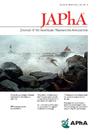评估生成式人工智能从智能手机图像中提供用药指导的准确性。
IF 2.5
4区 医学
Q3 PHARMACOLOGY & PHARMACY
Journal of the American Pharmacists Association
Pub Date : 2025-01-01
DOI:10.1016/j.japh.2024.102284
引用次数: 0
摘要
背景:美国食品和药物管理局要求患者标签材料,如药物指南(MG)和使用说明(IFU),以支持适当的药物使用。然而,诸如健康素养低和难以浏览这些材料等挑战可能导致不正确的药物使用,从而导致治疗失败或不良后果。生成式人工智能的兴起,为通过图像识别和文本生成提供可扩展的、个性化的患者教育提供了机会。目的:本研究旨在评价ChatGPT基于用户提供的药物图像生成的用药说明书与厂商标准说明书的准确性和安全性。方法:将需要多个给药步骤的12种药物的图像上传到ChatGPT的图像识别功能。使用文本分类器、计数矢量化(CountVec)和术语频率-逆文档频率(TF-IDF)将ChatGPT的回答与官方IFU和MG进行比较。临床准确性由独立药剂师进一步评估,以确定ChatGPT反应是否对患者指导有效。结果:ChatGPT正确识别所有药物并生成患者说明。CountVec在文本相似度分析方面优于TF-IDF,平均相似度得分为76%。然而,临床评估显示说明书存在显著差距,特别是对于复杂的给药途径,ChatGPT的指南缺乏必要的细节,导致临床准确性得分较低。结论:虽然ChatGPT有望生成对患者友好的用药说明,但其有效性因药物的复杂性而异。研究结果强调需要进一步完善和临床监督,以确保人工智能生成的医疗指导的安全性和准确性,特别是对于具有复杂给药过程的药物。本文章由计算机程序翻译,如有差异,请以英文原文为准。
Evaluating a generative artificial intelligence accuracy in providing medication instructions from smartphone images
Background
The Food and Drug Administration mandates patient labeling materials like the Medication Guide (MG) and Instructions for Use (IFU) to support appropriate medication use. However, challenges such as low health literacy and difficulties navigating these materials may lead to incorrect medication usage, resulting in therapy failure or adverse outcomes. The rise of generative AI, presents an opportunity to provide scalable, personalized patient education through image recognition and text generation.
Objective
This study aimed to evaluate the accuracy and safety of medication instructions generated by ChatGPT based on user-provided drug images, compared to the manufacturer's standard instructions.
Methods
Images of 12 medications requiring multiple steps for administration were uploaded to ChatGPT's image recognition function. ChatGPT's responses were compared to the official IFU and MG using text classifiers, Count Vectorization (CountVec), and Term Frequency-Inverse Document Frequency (TF-IDF). The clinical accuracy was further evaluated by independent pharmacists to determine if ChatGPT responses were valid for patient instruction.
Results
ChatGPT correctly identified all medications and generated patient instructions. CountVec outperformed TF-IDF in text similarity analysis, with an average similarity score of 76%. However, clinical evaluation revealed significant gaps in the instructions, particularly for complex administration routes, where ChatGPT's guidance lacked essential details, leading to lower clinical accuracy scores.
Conclusion
While ChatGPT shows promise in generating patient-friendly medication instructions, its effectiveness varies based on the complexity of the medication. The findings underscore the need for further refinement and clinical oversight to ensure the safety and accuracy of AI-generated medical guidance, particularly for medications with complex administration processes.
求助全文
通过发布文献求助,成功后即可免费获取论文全文。
去求助
来源期刊
CiteScore
3.30
自引率
14.30%
发文量
336
审稿时长
46 days
期刊介绍:
The Journal of the American Pharmacists Association is the official peer-reviewed journal of the American Pharmacists Association (APhA), providing information on pharmaceutical care, drug therapy, diseases and other health issues, trends in pharmacy practice and therapeutics, informed opinion, and original research. JAPhA publishes original research, reviews, experiences, and opinion articles that link science to contemporary pharmacy practice to improve patient care.

 求助内容:
求助内容: 应助结果提醒方式:
应助结果提醒方式:


